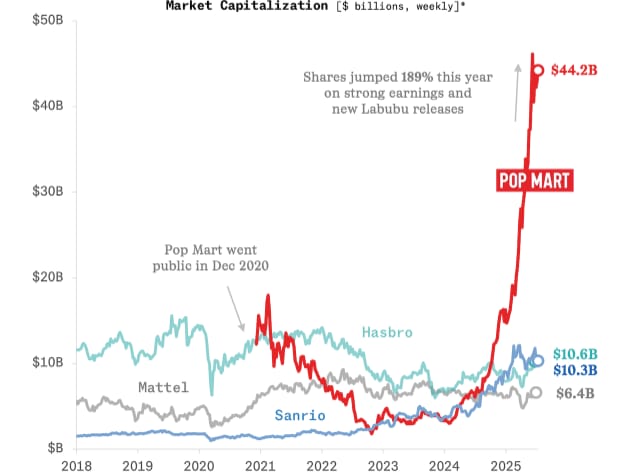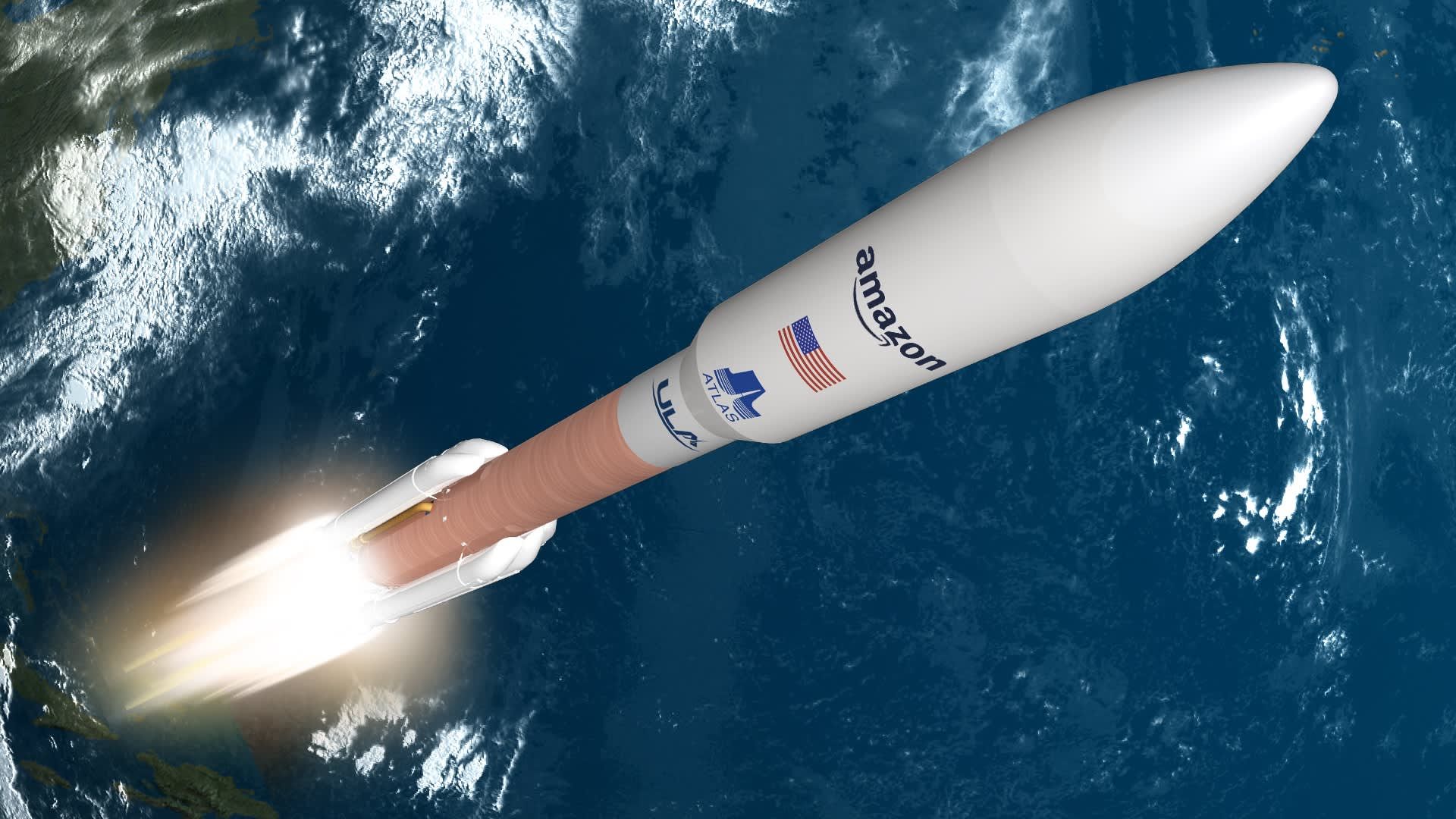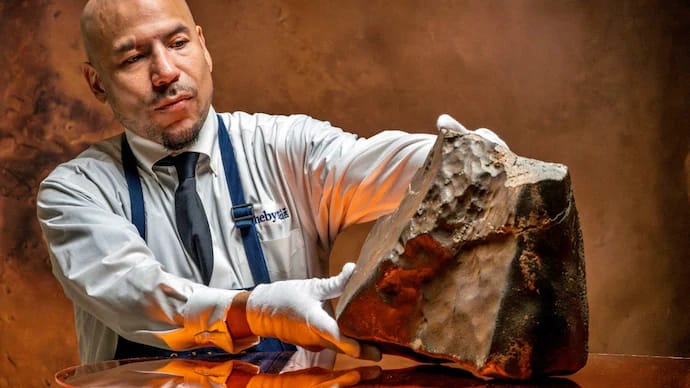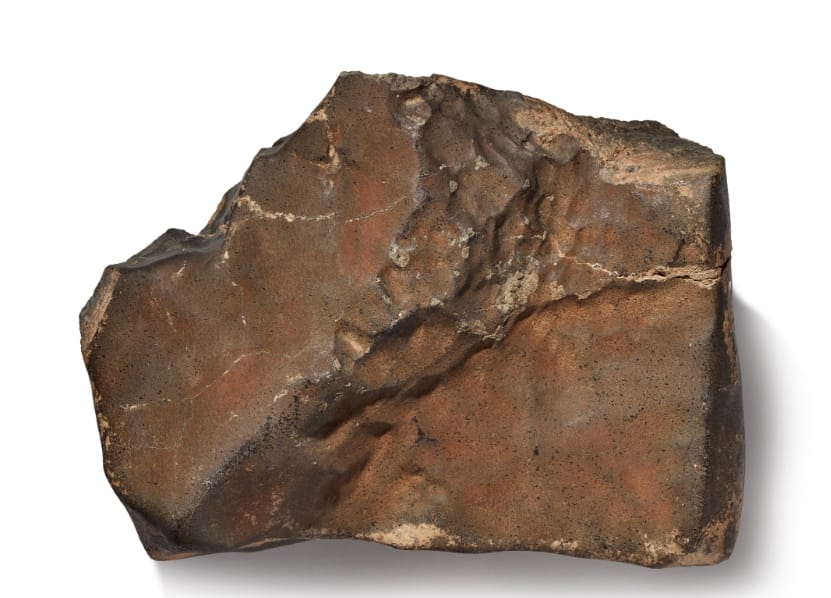- Markets - Around The World
- Posts
- Labubus Makes PopMart a $44B Giant
Labubus Makes PopMart a $44B Giant
& Rivals Ride Together
PopMart now More Valuable Than The Three Global Toy Giants Combined

Source: FactSet, Chartr
Pop Mart, the Chinese designer toy brand behind the wildly popular Labubu figure, just forecast a jaw-dropping 350% profit surge and a 200% revenue spike for the first half of 2025. Fans are lining up for hours — and celebrities are flaunting Labubu charms like fashion accessories — as the company rides a global wave of fandom and collector obsession.
Once struggling after its 2020 IPO, Pop Mart has flipped the script: its stock has soared nearly 600% in just 12 months, pushing its market cap to $44 billion — higher than the combined value of Sanrio, Hasbro, and Mattel. That makes it arguably the most valuable toy company in the world today.
Pop Mart credits the turnaround to sharp branding, global expansion, and tighter control of costs. But the real secret sauce? Turning toys into cultural currency — a strategy that’s paying off big time.
Amazon Taps SpaceX for Satellite Launches
In a twist of cosmic irony, Amazon has struck a deal with SpaceX — to launch part of its Project Kuiper satellite network. The launches, beginning in 2026, will help Amazon meet its deadline to deploy half of its planned 3,236 satellites by mid-2027, as required by regulators.

It’s a sharp example of “coopetition” in the new space race: rivals teaming up when physics and pragmatism demand it. The move reflects a pragmatic shift in the evolving space economy. With launch capacity limited and reliability paramount, Amazon is prioritizing speed and scale over rivalry. As satellite broadband becomes a trillion-dollar market opportunity, strategic partnerships — even between direct competitors — are becoming the norm, not the exception.
Mars Rock Breaks Record
The largest piece of Mars on Earth sold for nearly $5.3M at Sotheby’s yesterday—the most valuable meteorite ever auctioned.

The segment was discovered in November 2023 by a meteorite hunter in Niger’s Agadez region of the Sahara Desert. The rock has a distinct Martian reddish hue and is partially composed of glass (21.2% by volume), believed to have been forged from the heat and pressure applied to Mars’ surface when an asteroid struck it, propelling the chunk 140 million miles through space. It has the scientific name NWA 16788, referencing its discovery in Northwest Africa, and was validated as a Martian rock in the leading journal for meteoritic science earlier this year.

Martian meteorites are rare, composing roughly 400 of the more than 77,000 officially recognized meteorites. Most meteors burn up as they enter Earth’s atmosphere, with remnants largely landing in the ocean.